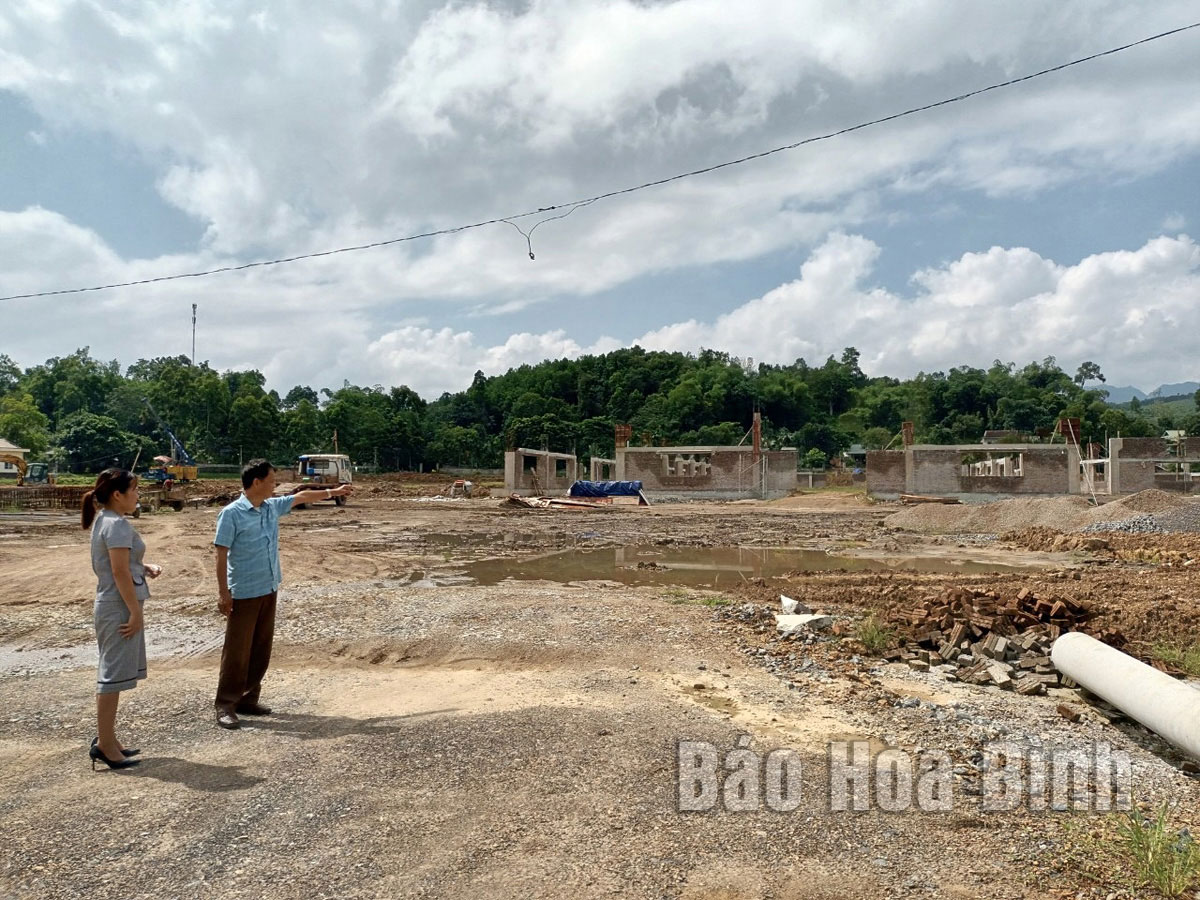
(HBO) – Urbanisation is a motivation for the socio-economic development and the improvement of the living conditions for locals, according to Nguyen Ngoc Diep, Secretary of the Party Committee of Lac Son district.
Thuong Coc commune attracts investment in industrial development, contributing to developing rural areas in association with the formation of Khang Vat residential area.
As a locality with the lowest urbanisation rate, Lac Son's only urban area is Vu Ban township. After being merged, the township has a population of over 9,500, with the urbanisation rate of 8,65%.
The district has made a development planning for Muong Vo township which covers the whole area of Nhan Nghia commune with about 1,400 hectares. At the same time, Lac Son has a number of rural areas that can be developed into urban areas such as Cho Oc in Thuong Coc commune, Cho Re in An Nghia commune, Nga Ba Xua in Xuat Hoa commune, Lam Hoa area in Vu Binh commune, and Cho Chieng in Tan Lap commune.
The district has faced many difficulties in urban development, including a large population and poor transport infrastructure system.
Amid the situation, the district Party Committee has issued a resolution on urban development, which sets a target of 15% in urbanisation rate in 2025 and 25% in 2030.
At the same time, the locality will apply comprehensive measures to boost socio-economic development, transform the economic, labour and employment structure towards increasing the rate of industry, service and reducing that of agriculture.
It will make a plan to urbanise Vu Ban, Muong Vo and Muong Khoi townships, while developing a new-style rural development planning in association with the formation of rural residential areas.
Alongside, the district will work to develop urban and rural infrastructure system, and mobilise resources to complete the power, water supply, park and entertainment system in urban areas.
The urbanisation will be implemented in parallel with the preservation of cultural values of the Muong ethnic minority people./.
Mai Chau district has firmly established itself as a standout destination on Vietnam’s tourism map, attracting both domestic and international visitors with its breathtaking landscapes, rich ethnic culture, and warm hospitality. However, beyond its natural and cultural charm, a secure and well-managed tourism environment has added to Mai Chau’s appeal.
As Vietnam enters a new phase of economic and administrative reform in 2025, Hoa Binh province is stepping up its efforts to streamline governance, boost economic growth, and attract investment.
The Hoa Binh provincial People's Committee held its monthly meeting on March 26 to review the progress of key projects, assess budget revenue and public investment disbursement, provide feedback on draft documents for submission to the provincial Party Committee's Standing Board, and discuss other important matters related to the committee's governance activities.
Playing a key role in Hoa Binh province’s economic development, Luong Son district has been focusing on science and technology development, innovation, and digital transformation.
Identifying the application of online public services as a key step in administrative procedure reform and e-government building, Kim Boi district has proactively provided services and supported residents and businesses in accessing and utilising full-process online public services promptly and efficiently. The locality aims to lift the rate of end-to-end online public services to over 90%, with all officials and civil servants handling tasks in the digital environment.
Nguyen Anh Tuyet, hailing from a family steeped in the ancient art of herbal medicine, is transforming local medicinal herbs into high-value concentrated extracts, elevating their worth and healing potential.



